Millions of people deal with carpal tunnel pain daily, a nagging wrist condition that makes simple tasks like typing or cooking difficult. Red light therapy offers a modern solution - it uses special light waves to calm inflammation and help heal the pinched nerve causing your discomfort.
Now you can find affordable red light devices made just for wrists to use right at home. These simple tools come as wraps or small panels that shine healing light exactly where it hurts. With regular use, many people find their pain decreases and hand movement improves without needing medications or surgery.

Why Does Carpal Tunnel Pain Affect So Many Lives?
Carpal tunnel syndrome affects millions of people worldwide, with 1-5% of the general population experiencing symptoms. It disproportionately affects women, with the condition affecting them around three times more than men. In the United States alone, 4-10 million people experience carpal tunnel pain that impacts their lives.
Few realize how limiting this condition is until mundane things become torturous exercises - typing, driving, or even buttoning a shirt become painful routines. Middle-aged and senior individuals are at the highest risk, typically when they are most active in their professional lives. Those with other medical conditions are even more prone to carpal tunnel problems.
Since increasing numbers of people struggle with this suffering, the search for better solutions has reached a fever pitch. Traditionally, methods like wrist splints and surgery carry downsides - they're expensive, disruptive, time-consuming to recover from, or just don't cut it. That's why so many people are opting for at-home remedies that they can work on themselves. Red light therapy has emerged as one of the options for relieving the nerve pain and inflammation that makes carpal tunnel so annoying.
What Is Red Light Therapy and How Can It Help With Pain?
Red light therapy uses certain red and near-infrared light to help your body heal itself. Unlike medication or surgery, this treatment simply applies light to your skin that travels about half an inch deep into your tissues. The procedure—photobiomodulation—is achieved by energizing from the inside out the energy factories of your cells (mitochondria), like a natural cellular energizer.
The technology is science at its foundation: after such precise wavelengths of light have landed on your cells, a cascade of positive reactions occurs. Your body responds by calming inflammation, improving circulation, and speeding healing. Red light therapy then becomes effective to treat most painful disorders, especially inflammations thereof—why individuals with pain in the joint, aching muscles, or nerves would choose to utilize this innovation.
Most appealing is how non-invasive it is—no cut, no needle, no side effects of medications. There's growing evidence in research of its effectiveness in relieving certain types of pain, such as knee pain, arthritis, and pain after surgery. Doctors are listening, too, as research suggests that red light therapy can diminish both pain and inflammation from many afflictions, even those induced by cancer treatments like radiation.
How Does Red Light Therapy Help Carpal Tunnel Pain?
Carpal tunnel syndrome occurs when the median nerve is pinched as it travels through a narrow passageway in the wrist called the carpal tunnel. The pinching causes pain, numbness, tingling, and weakness in the hand and fingers. Red light therapy, or low-level laser therapy (LLLT) or photobiomodulation, is a surgery-free treatment of this condition by using specific wavelengths of light that penetrate the skin to reach damaged tissues.
Red Light Reduces Swelling Around the Nerve
Red light therapy directly affects the swollen tissues around the median nerve. Carpal tunnel syndrome happens when chronic inflammation affects the transverse carpal ligament and causes it to swell, compressing the nerve. The light energy reduces this inflammation, which can remove pressure from the median nerve and provide symptom relief.
Enhanced Blood Flow Promotes Healing in the Wrist
One of the main benefits of red light therapy is that it has the ability to enhance blood flow within the treated area. When applied to the wrist, the light energy stimulates the development of new blood vessels (angiogenesis) and causes existing blood vessels to perform more efficiently. This increased blood flow brings more oxygen and nutrients to damaged tissues and helps to remove waste products. Enhanced circulation reduces swelling around the median nerve and supports the healing process.
Light Energy Speeds Up Tissue Healing
The light energy from red light therapy penetrates the skin to reach the affected tissues, where it stimulates cellular activity. On a cellular level, the therapy increases energy synthesis in mitochondria (the energy powerhouses of the cell), which works to accelerate tissue repair processes. This can be particularly beneficial for the median nerve and the tissues around it that were damaged from repetitive compression.
Why Are Home Red Light Therapy Devices So Popular Now?
More and more people are bringing red light therapy into their homes as technology becomes more affordable and accessible. This makes sense for several reasons:
- Save money in the long run: Clinic treatments range from $25-300 per session, but home devices are a one-time purchase of $100-1,000. This is increasingly more cost-effective for heavy users compared to repeated visits to clinics.
- Comfort and ease: Home treatment means no waiting rooms or embarrassment. Most people would choose treatment when they are comfortable at home.
- Better everyday use: Everyday use is the key to success. A red light therapy at home makes it easy to use every day without appointments and travel.
- Options for everyone: The market now offers everything from handheld wands to treat small spaces to body panels. This accessibility allows people to choose devices that best meet their personal needs and budgets.
This is a massive shift in self-care, giving people more control over their health habits along with convenience and affordability. Red light therapy has moved from the clinic to everyday life as a personal wellness product rather than just a professional treatment.
How to Pick the Right Red Light Therapy Device for Carpal Tunnel Relief
If you're looking to relieve carpal tunnel pain at home, red light therapy devices can help, but the correct device does make a difference. With so many available on the market, understanding the basics will help you get a device that will meet your needs without paying extra for features that you won't need. Let's break down what to look for.
Light Types: Getting to the Root of Your Pain
Red light therapy uses two main types of light to help with carpal tunnel pain:
| Light Type | What It Does | Best For |
|
Red Light (630-660 nm) |
Treats surface-level issues | Skin inflammation, surface pain |
|
Near-Infrared Light (830-940 nm) |
Penetrates deeper | Nerve issues, deep tissue healing |
For the best results, look for a device that offers both types of light. This "dual-action" approach treats both the surface inflammation and the deeper nerve issues that cause carpal tunnel symptoms. Think of it like using both ice and heat therapy—each works differently, but together they provide more complete relief.
Design: Finding the Perfect Fit for Your Wrist
The shape and style of your device can make a big difference in how well it works for carpal tunnel:
| Device Type | Pros | Cons |
| Wrist Wraps |
Fits right where you need it Hands-free use Often portable |
May have lower power Limited coverage area |
| Handheld Units |
Precise control Can be used on multiple body parts |
Requires holding during treatment May cause hand fatigue |
| Small Panels |
More powerful Treats larger areas |
Less portable It may be more expensive |
The best design lets you easily treat your wrist without awkward positioning or discomfort. Look for something that fits naturally around your hand and wrist, especially if you'll be using it regularly.
Safety: What Makes a Device Worth Trusting
While you're using a device regularly, you'll want to know it is safe:
- Look for FDA-cleared devices that have been tested for both safety and effectiveness
- Check for built-in timers that prevent overtreatment
- Consider devices with automatic shut-off features for peace of mind
- Read reviews from other carpal tunnel patients specifically
Since the carpal tunnel is most likely treated with weekly sessions for many months, having a good device with safety features will make you feel comfortable utilizing it in the long term.
It is not necessary to struggle to find a good red light therapy device. Look for one that has a red light and near-infrared light and is simple to use on your wrist. Make sure it is strong enough to work without requiring inordinately long treatments, and make sure it has sufficient safety features.
Consistency is better than having the most technologically advanced device. A simple device you will be using daily is better than the pricey one that sits in a drawer. The right tool and regular usage enable many to notice a spectacular decrease in the symptoms of carpal tunnel without obtaining more aggressive remedies.

How to Use Red Light Therapy at Home for Carpal Tunnel Relief
Getting the most from your red light therapy device isn't just about having the right equipment—it's about how you use it. Follow these practical guidelines to maximize your carpal tunnel relief and avoid wasting time on ineffective treatments.
How Often Should You Use It?
Consistency is the secret ingredient that makes red light therapy work for carpal tunnel:
| Severity Level | Recommended Frequency |
| Mild symptoms | 2-3 times per week |
| Moderate symptoms | 3-5 times per week |
| Severe symptoms | Daily (but not multiple times per day) |
For most people, 3-4 sessions per week strikes the right balance between giving your body enough healing light while allowing time for your tissues to respond between treatments. Results typically begin after 2-3 weeks of regular use, with more significant improvement after 6-8 weeks.
Positioning Your Device Correctly
In order to address the true carpal tunnel area, correct positioning is critical:
- Treat both sides of the wrist - Apply the light to both the palm-side (where the carpal tunnel is located) and the back of your wrist
- Treat the palm and base of the thumb - The median nerve continues into these areas
- Keep the device 6 inches away from skin for best penetration (unless a contact device, which is designed to be applied directly to the skin)
- Keep your wrist straight, not curved forward or backward, when treating
For wraps or handheld devices, ensure that they go from your mid-palm up to about 3 inches on your forearm to encompass the whole area that's affected. Some individuals prefer treating a larger area rather than a pinpoint spot.
Creating a Sustainable Routine
Follow these practical tips to make your therapy sessions more effective and easier to maintain:
- Schedule fixed times - Treat at the same times each week to build a habit
- Combine with other activities - Use your device while watching TV or reading
- Track your progress - Keep notes on pain levels and grip strength to see improvement
- Be patient - Most users see initial improvements within 2-4 weeks, but full benefits may take 8-12 weeks of consistent use
Unlike medications that work immediately, red light therapy promotes gradual healing by supporting your body's natural repair processes. This means consistent use over time is more important than intense treatment over a short period.
When to Adjust Your Approach
Pay attention to how your body responds and make adjustments as needed:
- If you feel no change after 3-4 weeks, try increasing frequency (not duration)
- If you experience increased tingling during treatment, this is often temporary and normal
- If you feel any discomfort or skin irritation, discontinue use and consult a healthcare provider
- Consider using it before bedtime, as some users report improved sleep following treatment
Remember that red light therapy works best as part of a comprehensive approach to carpal tunnel that may include rest, stretching, ergonomic adjustments, and proper wrist positioning during daily activities.
The most expensive device won't help if you don't use it regularly. A simple device used consistently according to these guidelines will likely provide better results than a high-end device used sporadically. Set realistic expectations, follow a regular schedule, and give the therapy enough time to work. Most users experience significant improvement when following these best practices.
Beyond Pain Relief: Additional Perks of Red Light Therapy for Wrists and Hands
Better Blood Circulation and Cell Health
Red light therapy improves your blood circulation to your wrists and hands, delivering better oxygenation and nutrients where needed. It also improves the energy output of your cells, so they are healthier and more efficient at repairing themselves.
Better Nerve Health
The treatment can regenerate nerves and relieve pressure on them, extremely useful for carpal tunnel syndrome, where nerves are compressed. The majority of users experience more feeling in their fingers after repeated treatment.
Less Swelling and Inflammation
Red light penetrates deep into tissues to reduce chronic inflammation in your hands and wrists. This helps to decrease swelling, morning stiffness, and pain, which is especially helpful for arthritis and repetitive strain injuries.
Enhanced Dexterity and Mobility
With the healing process becoming better and inflammation reducing, enhanced finger flexibility and joint mobility can be expected. Many users regain the capacity to resume activities that had been forsaken due to hand pain or limitation.
Enhanced Healing and General Health
The treatment accelerates tissue healing and enhances collagen synthesis, making your tendons and ligaments in your hands stronger. Regular use keeps your hands functioning well overall as you grow older, maybe even slowing joint wear.
How to Use Red Light Therapy Safely at Home
Red light therapy is generally safe with few side effects when used correctly. Most home devices include safety features for consumer use. Following instructions and understanding your health needs are essential for safe treatment of carpal tunnel pain. Serious problems are rare, but caution is still important.
- Read the Manual: Always refer to the manufacturer's guide for your particular device. Take note of recommended treatment time, session duration, and interval. Begin with short sessions of 10-20 minutes and gradually build up as your body adapts. Application of the device for more than the suggested duration will not enhance results and can lead to side effects.
- Learn Common Side Effects: A Few side effects are experienced by most users. You can have temporary redness, heat, or skin tightness that subsides quickly. Skin blistering is caused by abuse occasionally. Some users suffer from headaches, eye irritation, or insomnia, mostly at night.
- Do Not Use Red Light Therapy If You Have These Conditions: Do not use red light therapy if you have medication-induced or medically induced photosensitivity, active cancer, suspicious skin lesions, epilepsy, or seizure disorders. Pregnant women also need to avoid it because there is very little safety research.
- Watch Your Eyes: Have your safety glasses that are included with your device easily accessible at all times. Even though a red light is safer than UV, staring at very intense sources of light will nevertheless tire or hurt your eyes.
- Stay Away from Water: Refrain from using red light therapy devices during shower time or in steamy rooms. Water can seep into the device and cause electrical problems or damage. Check your device manual for water resistance information. If your device is not waterproof, store and use it in dry locations in an attempt to protect it and extend its lifespan.
- Ask Your Doctor First: Request an appointment with a doctor before applying, especially when you have a disease, skin infections, or are on medication that exacerbates light sensitivity. Your doctor can judge whether the remedy will be beneficial for you or not and help you with some tips on applying it.
- Watch out for Problems: Notice how your skin responds and stop using the device if you experience unusual or recurring side effects like burns, blisters, rashes, or increasing pain. Keep an eye on your sessions to see what suits your needs best.
Start Healing Your Carpal Tunnel With Red Light Therapy Today
Red light therapy can be your drug-free and surgery-free carpal tunnel pain solution. Having the proper unit in your house – one with the proper wavelengths and that snugly fits your wrist – you can target the inflammation and nerve damage causing your pain. Improvement is typically felt by most within a few weeks of regular use, typically 3-4 times a week.
The good news? It's low-risk with almost no side effects if used correctly. While it might not work for everyone, it's worth discussing with your doctor, especially if you're tired of pain meds or worried about surgery. Let your wrists and hands heal naturally – routine treatment is what makes all the difference in getting back to things you love.



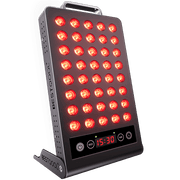









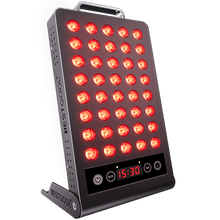
 Small
Small
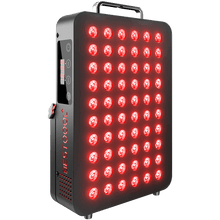
 Moderate
Moderate
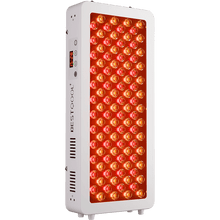
 Moderate
Moderate
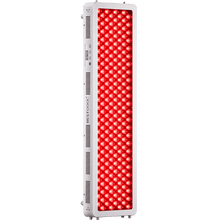
 Moderate
Moderate
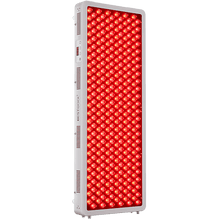
 Full
Full



